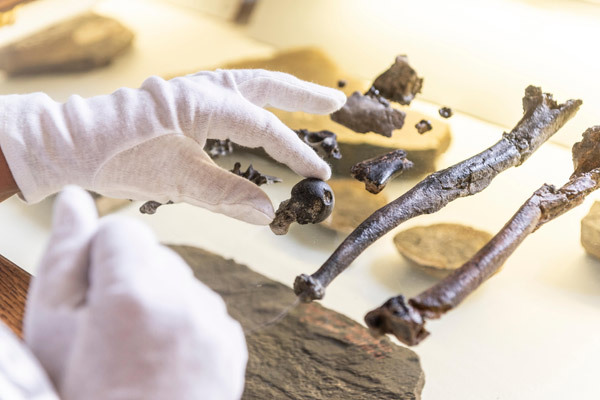Bipedalism is one of the features that defines the human species. Walking upright was a key evolutionary advantage that separated the ancestors of the sapiens from the rest of the apes. However, how and when our ancestors began to move on two legs remains, to a large extent, a mystery.
There is no agreement among scientists about whether the first members of the genus 'Homo' evolved from a common terrestrial ancestor, which moved at the same time on feet and knuckles (like gorillas) or an animal that spent its life in trees.
The discovery of a new species of ancestral primate, which lived in Bavaria 11.6 million years ago, could help clear many of these unknowns. Baptized as ' Danuvius guggenmosi ', this small animal of about 30 kilograms moved in a different way to all current varieties, but presents common features to many of them.
The authors believe that their anatomy could serve to explain the type of locomotion from which the bipedism of hominids evolved. "These fossils reveal a locomotion different from any living creature," explains Madelaine Böhme, a researcher at the University of Tübingen and lead author of the finding, whose details are published this Wednesday in Nature . "He lived in trees, but he also moved on the ground, most likely biped."
Investigators believe that 'Danuvius' was moving "climbing with extended limbs." This position combines useful adaptations for both life on the ground and in trees, since it could have been hung from the branches with its arms but, unlike other tree monkeys, it could also keep the hind limbs straight .
While current species, such as gibbons or orangutans, favor the arms to move, 'Danuvius' could also use the legs to walk. A hypothesis that also supports the shape of the sole of the foot, in which only the thumb is prehensile. "It would have allowed him to walk on the ground, even if they were short distances," says Böhme.
Last common ancestor
Scientists believe that bipedism could arise between 7 and 5 million years ago, in the final stretch of the Miocene. The anatomical study of the fossils of some of our oldest relatives - direct or indirect - indicates that they were already at least partially biped. Among them are the Sahelanthropus (which lived 7 million years ago), the Orrorin (6), the Ardipithecus (5) or the Australopithecus (4 million). But to understand how this crucial point of evolution was reached, it is essential to know the type of locomotion used in the previous stage. "Our last common ancestor with the great apes did not resemble a chimpanzee, nor any great living ape ," says Böhme, "but it is possible that he resembled 'Danuvius."
The sum of its features makes this new species a candidate to be the last relative shared by hominids and other primates before bipedism appeared in the first. "The forms of locomotion existing in today's primates, both human and great apes, can be related to climbing with extended limbs," says Böhme. "What seems to me, in a sense, elegant."
New paradigm
The teeth of the 'Danuvius guggenmosi' identify him as belonging to a group of extinct apes, the 'Dryopithecus', which lived since the second half of the Miocene in Europe and are considered as possible ancestors of the current African apes . Many of its characteristics are found today in chimpanzees and gorillas. In addition, during certain Miocene periods, it is known that many anthropomorphic apes moved between Europe, Asia and Africa when the weather changed.
However, the lower extremities relate 'Danubius' to the members of the genus 'Homo', predecessors of the 'sapiens'. The shape of the joints of the femur and tibia suggest the use of vertical postures for the hip and knee, which differ from those of the great African primates when, occasionally, they stand on their legs. The authors conclude that the new primate explains the transition that allowed the apes to walk on their legs before they can live on the ground.
"The current paradigm on how, when and where the bipedalism evolved is becoming wrong, " says the researcher. "A new theory about the evolution of bipedalism is missing, which adapts to the new findings. But we are working on it."
According to the criteria of The Trust Project
Know more- science
- Science and Health
ScienceChina breeds giant pigs the size of "polar bears" in the face of a shortage of meat from swine fever
Research Find out that a simultaneous sexual infection enhances anal cancer in men
AstronomyThe return of Venus

